My role at MOBI focused on growing, restructuring, and rebranding the club. To do this, I lead a data and peoples-first approach to understand organizational friction. I collaborated with multiple university organizations besides my own to foster a sense of community for computer science on the University of Texas at Arlington’s campus. Most importantly, I was determined to champion inclusitivity and openness to computer science. I lead MOBI with passion, because I loved seeing people take off and have fun with programming.
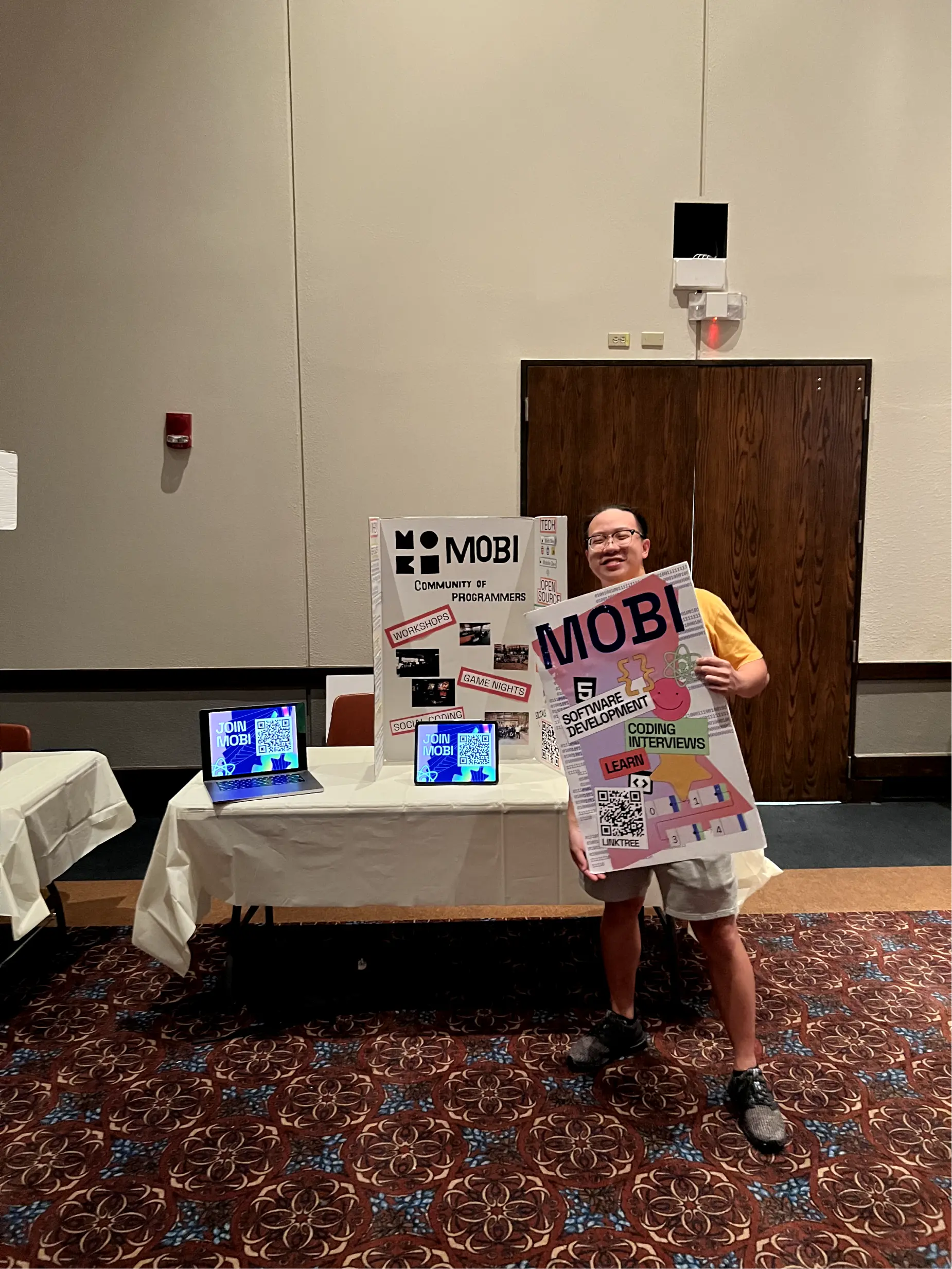
Challenge
After the pandemic, MOBI was left with approximately 4 members which were only officers. It was desginated as “frozen” by the university, which meant it would dissolve if it didn’t keep more than 8 members registered. MOBI had additional challenges: documentation was sporadic, responsibilities were concentrated towards leadership (president and vice president), events didn’t retain interest, officers would graduate with little replacement, and so much more. MOBI was existentially in danger.
Approach
I had learned so much from MOBI’s culture. As a new president, I made the choice to take steps to revive MOBI. I had recently completed my internship at Gozova where I put UX first in my development processes. Specifically, UX at Gozova was about understanding underlying assumptions, seeing where data matched up with reality, and executing opportunities from observed pain points. I applied the exact same approach with heavy focus on empathy: understanding the members at MOBI.
Execution: Revival
Reviving MOBI involved a long-term multi-stage plan that was developed and executed on the fly as opportunities arose. I was working with several unknown variables, and optimized for every good chance to grow the club. In fact, that was the most important factor.
MOBI needed members so that it would have officers. After MOBI had officers, then it would be possible to scale the club appropriately.
Tackling growth involved restructuring all previous methods to be more clear and directed towards potential members. With the remaining officers, I aimed to create flows and journeys where members would easily join MOBI and become participants. This involved creating fun incentives like hackathon stickers or making a website that quickly communicates MOBI’s value proposition. While I was recruiting, I was also collecting data. It turned out previous and potential members struggled to be informed about events and MOBI itself. I set out to revamp MOBI’s member onboarding flow with email and Discord. This lead to figcaption growth of about 10-20 participating members initially.
After I got a figcaption base, I decided to offer opportunities to be officers immediately with low barrier and no election. Just having a team assembled was better than none. This lead to MOBI’s network to be more spread and reach more members. Officers would invite and market the club to their classmates and friends in their freetime.
This ultimately lead MOBI to be unfrozen and stable. We were no longer in existential threat.
Execution: Growth
I supercharged onboarding by lowering friction as much as possible. Previously, recruitment was difficult because it was hard to collect member information while directing them to the MOBI online Discord community. Students would wait in line or lose interest because they were waiting to get signed up. It was information bombing and way too much to handle while pitching and recruiting multiple (10+) students at once.
To tackle this, I simplified communication and created clear call-to-actions across MOBI graphics and marketing. First, I reduced sentences of explanation into bite-sized thoughts. Then, I include a very large and clear QR code straight to either our Discord, website, or link-in-bio. Last, I connect this all together by exploiting high contrast and saturation. Bright, saturated colors give a playful presence while reinforcing clear visual hiearchy.
This enabled us to pitch to students at high density events. The UTA Activity Fair is a university student organization member recruitment event. Usually, officers are overwhelmed pitching and directing several students simultaneously. The graphics and ephemera helped tremendously with handling high desnity traffic. If officers couldn’t reach everyone, the posters would be there to passively pitch and sign up students. Not only is it clearer for students to onboard, but officers also have a single, direct path to guide students.
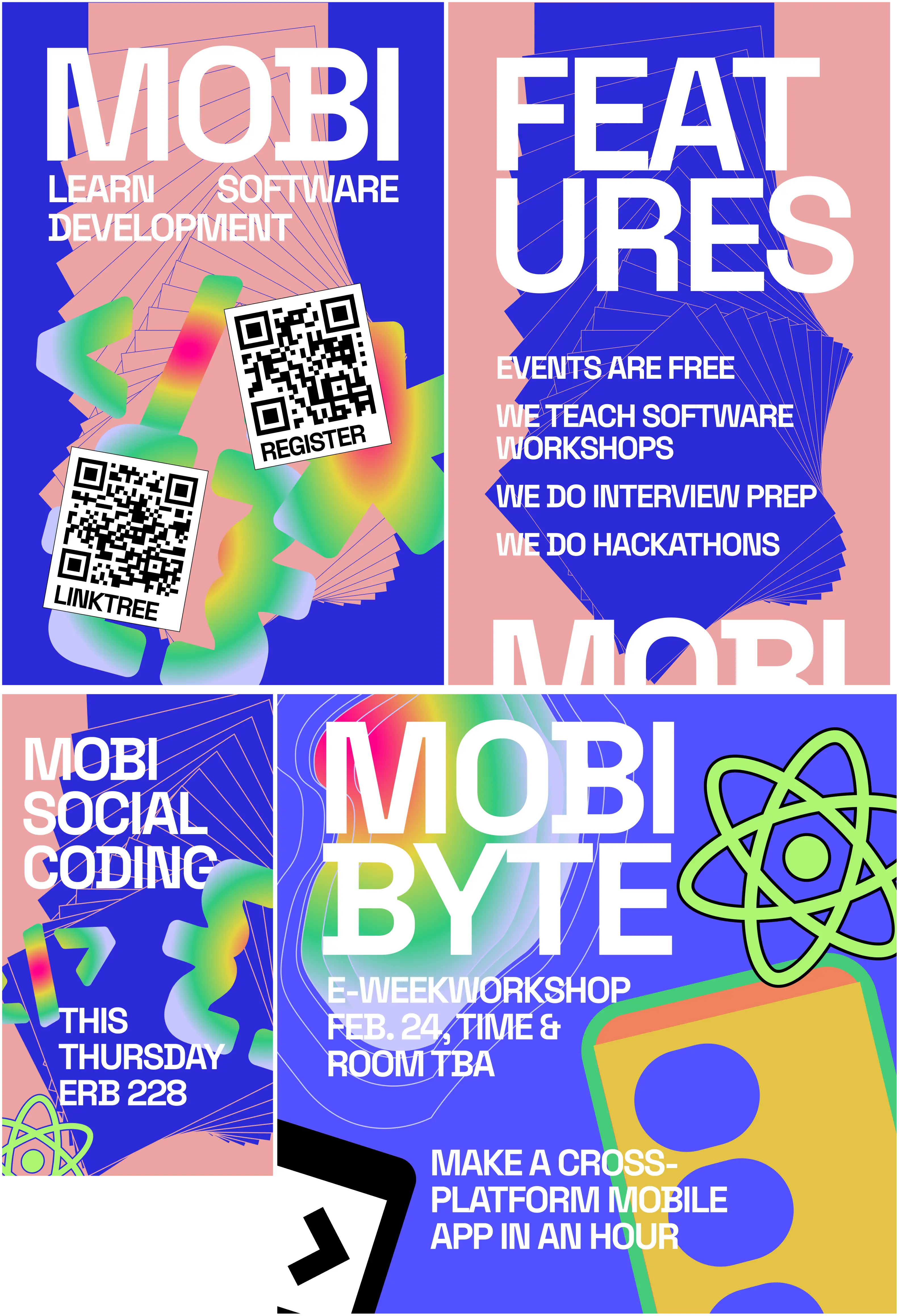
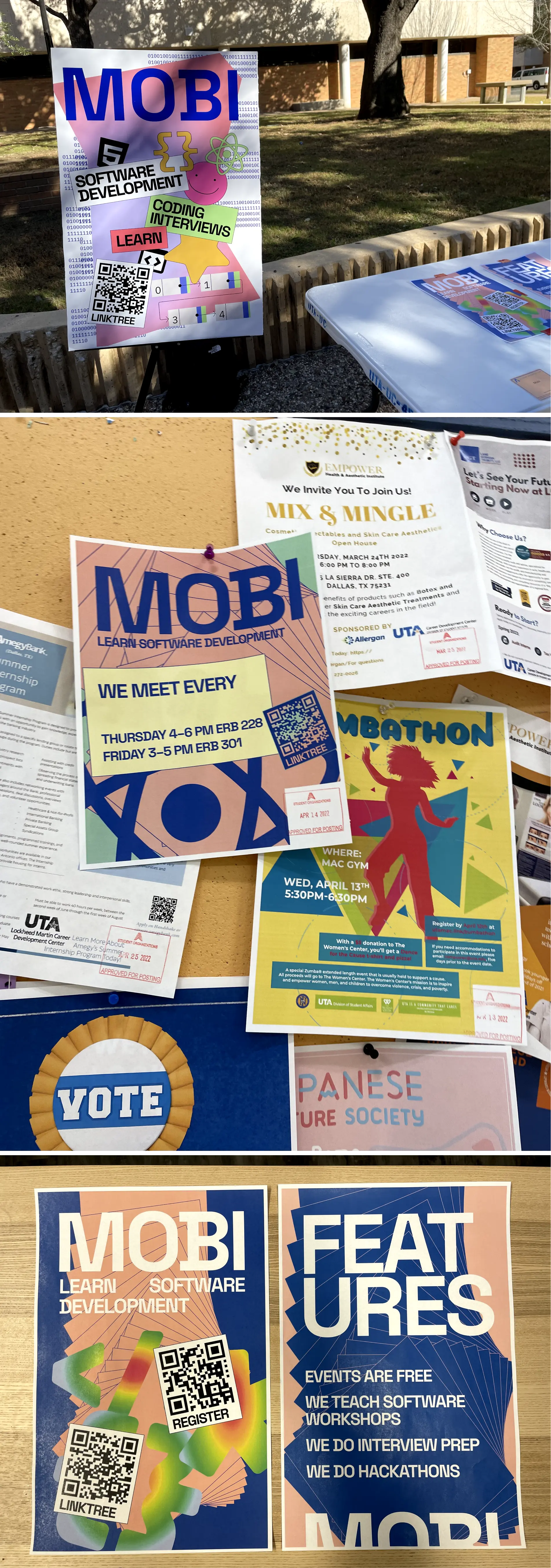
Execution: Operations
Having officers is not enough if the organizational structure doesn’t facilitate responsibilities and tasks well. Documentation was concentrated in one packet from previous officers thankfully. I made it an important task to update that packet and continue with embedding documentation in processes. Another important initiative I led was holding regular officer meetings, ensuring everyone was in the loop, and keeping a trail of meeting notes. This documentation helped officers how to tackle new responsibilities.
Additionally, officers didn’t have specified roles which made delegating tasks confusing; officer positions were either officers, vice president, or president. It typically ended up with a few officers doing most of the same tasks which really slowed operations down greatly. I brought this up during meetings and worked with officers to create a new structure where officers had a specialization. This helped greatly with communicating officer positions during officer recruitment and scoping responsibilities.
Execution: Culture
The next step was to rebrand MOBI as a whole. MOBI has two main regular events: social coding and workshops. The workshops were similar to university lectures with topics scoped to popular technologies and tools. Social coding was just a time to socialize with people who code. These events, while educational, did little to encourage members to feel included. Members would often fall behind, not keep up, and feel overwhelmed by workshops. Social coding felt isolated as people mostly kept to themselves.
For each case, I would experiment with something figcaption and gather data to see how it affected members. For example, I would revamp a workshop presentation format, and ask if things felt helpful each time. I created surveys to determine skill level, which lead me to discover that most people were beginners at industry technologies. Even graduate students only had minimal experience, but wanted to learn. Additionally, to nail socializing, I actually learned from another student organization: AIGA (the American Institute of Graphic Arts). When I went to their events, members and officers did events that guaranteed inclusion for everyone. They often were more hands-on with their members which lead me to notice how statisfied they all were.
After this research step, I decided to rebrand MOBI part-by-part. I started by clarifying and making MOBI’s mission clear. Members were often confused what they were supposed to do or be at MOBI.
I decided to write a clear statement: At MOBI, you will be guaranteed to learn a new industry skill by the end of the meeting. I knew the pain points of listening to a lecture and seeing people walk out or fall asleep on it. It doesn’t help that I could see members closing their laptops as we were coding along examples.
Taking this into account, I took my learnings from AIGA and introduced figcaption, bite-sized MOBI Bytes Workshops that were 80% hands-on exercise over lecture. I would not stand at the podium the entire time and assist with members directly over the workshop. I would pad out time to help catch members up knowing new concepts were overwhelming.
This approach surprised me. Numbers steadily grew, but most importantly, I noticed members that would consistently return to meetings over the semester. This would only happen to friends of officers previously!
I would apply the same approach to social coding where I would encourage officers to spend all their time socializing with other members. We just needed to get to know them and help them feel comfortable at MOBI events.
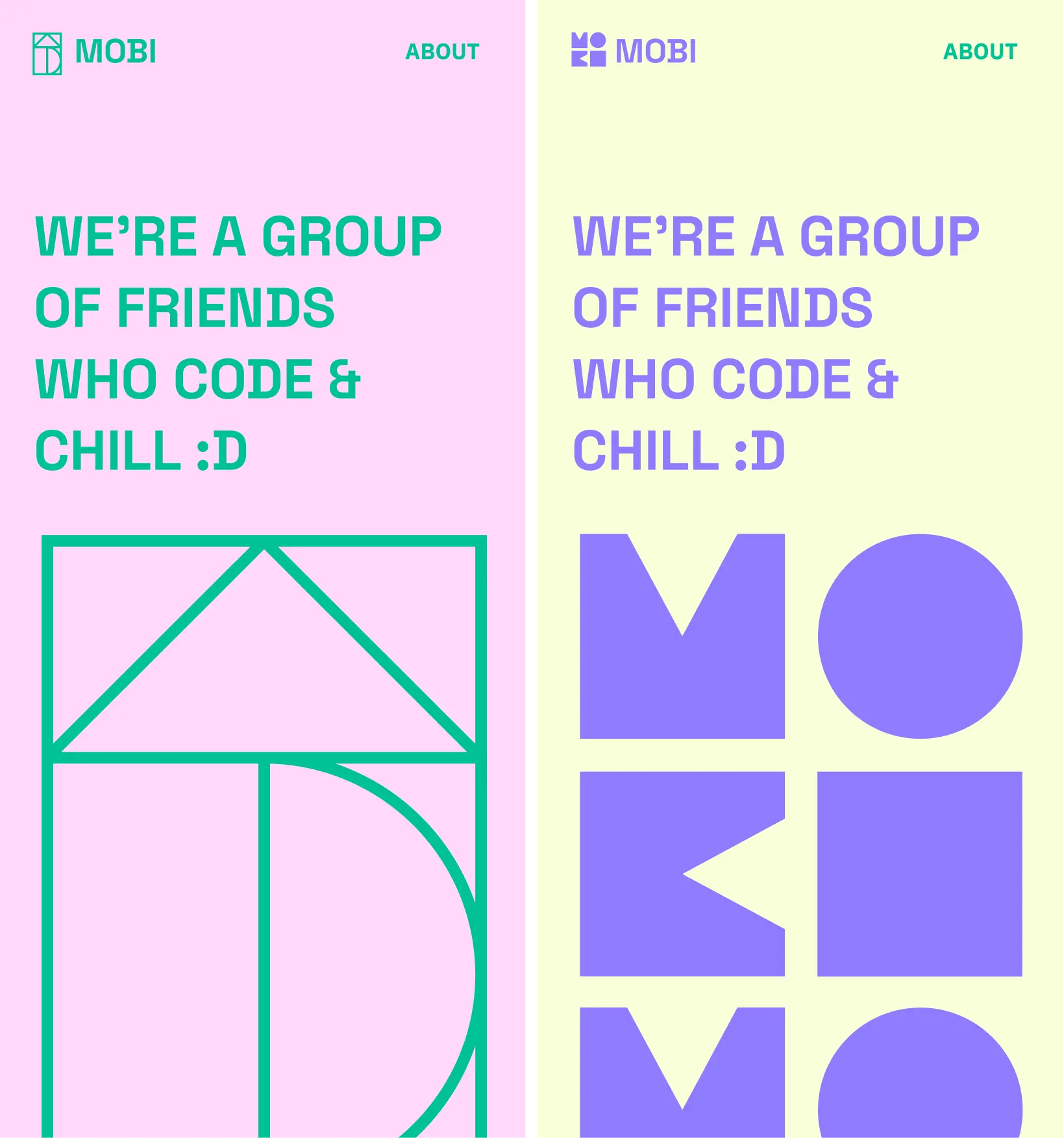
I designed 2 logos to symbolize this new personality in MOBI. Officers chose the right logo because “different quirky toy blocks of diverse people to build, together”.
Execution: Evolution
This led to MOBI’s network expanding greatly. To expand MOBI’s network further, I continued to network with other clubs like AIGA, GDC, (Game Developer’s Club), CSEC (Cybersecurity Club), and ACM (the Association for Computing Machinery) to learn from people outside my understanding. I learned a lot about their operating procedure, and they learnt from us. We eventually began sharing members and officers between each other, leading to university-wide collaborations.
The most significant collaboration, Project Temple or Octapoints, evolved MOBI beyond initial goals. Project Temple is a 20-person summer collaboration between MOBI and CSEC to mentor members software engineering, cybersecurity, and professional skills. It involved working in a simulated agile team and environment, building a mobile app for university student organizations. The community and networking this provided was immense. Participants often became officers and friends, leading initiatives across the university.
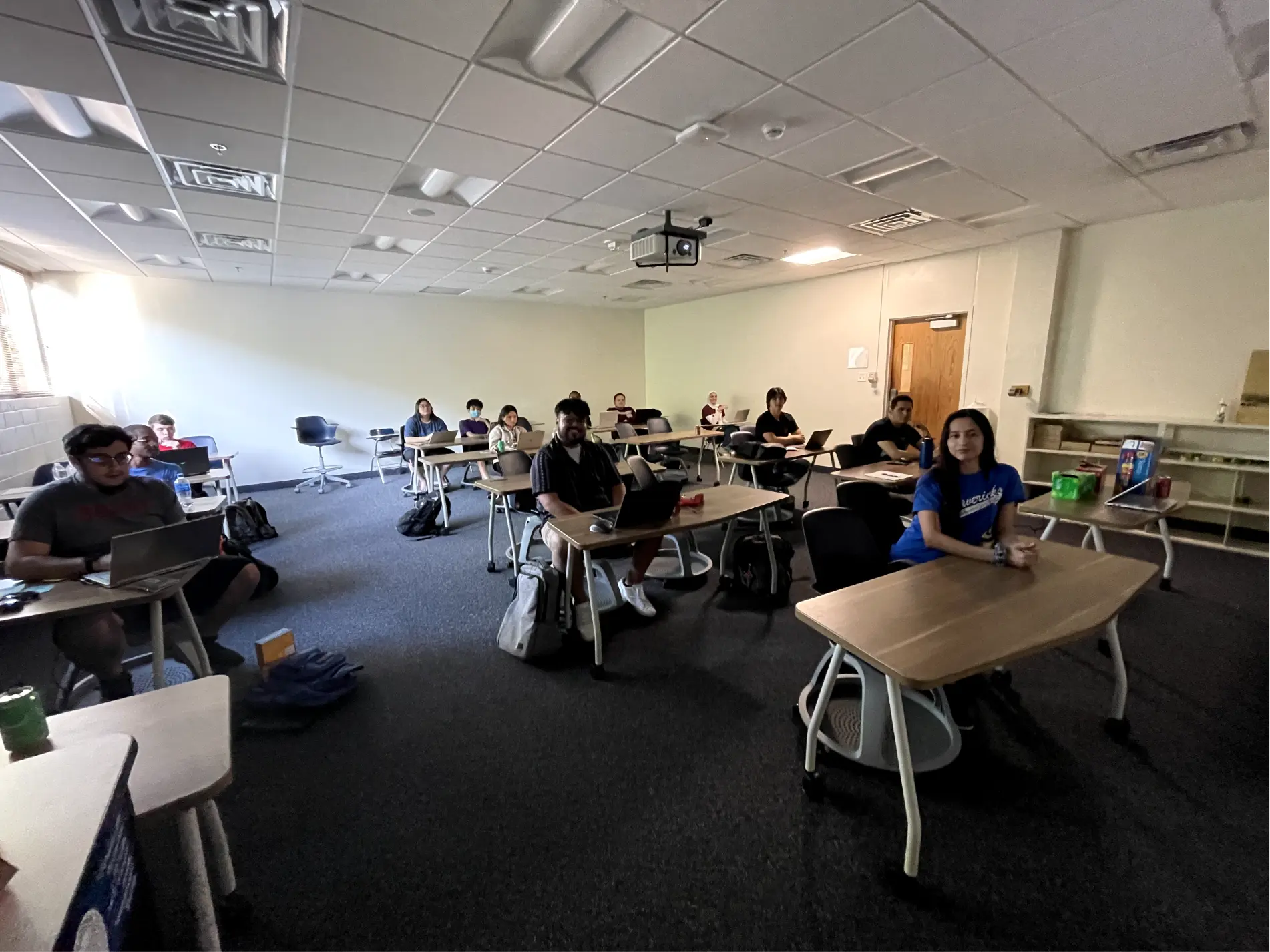
An Octapoints workshop with participants learning about Agile, Jira, and related software engineering workflows.
I finalized and celebrated MOBI’s rebirth and evolution by redesigning the club’s brand, logo, and ephemera to leave a lasting, friendly legacy. MOBI will go from hexagon and lecture to coding, fun, and play.
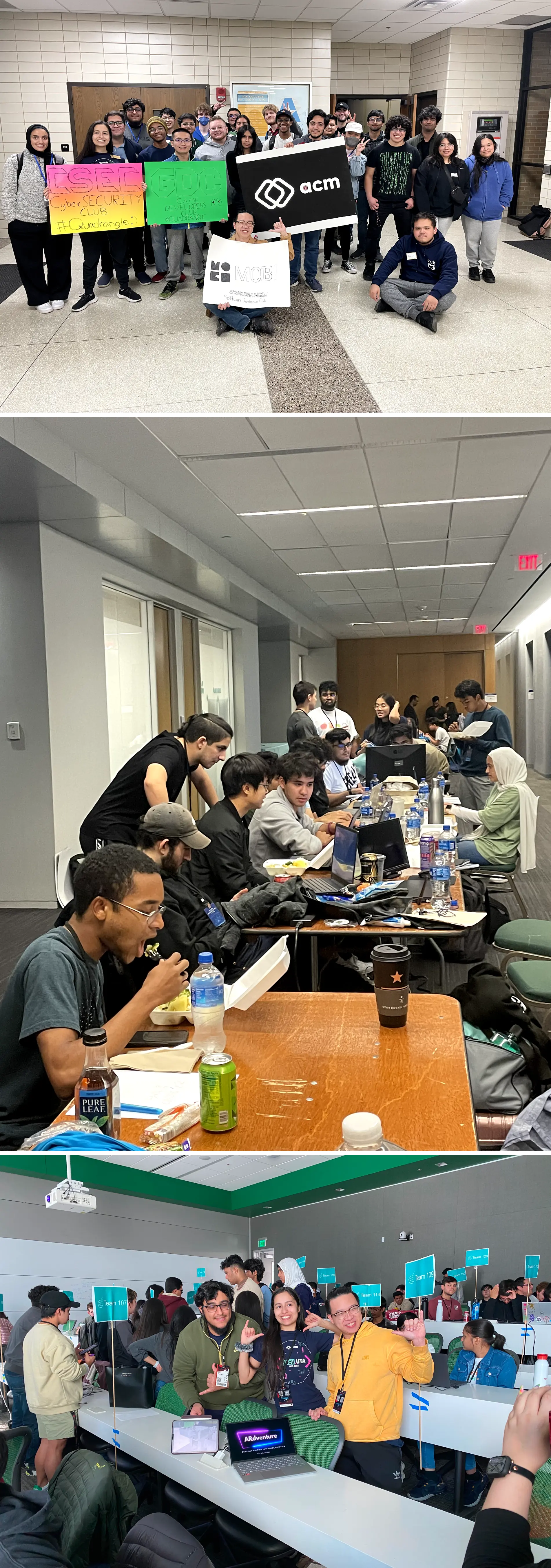
Me and the Quadrangle with several friends across hackathons and events.
Results
Coming from near destruction, MOBI has become a prominent organization in the university computer science space. I combined all my learnings and led events with at least 30 to 70 members. I grew a superstar officer team. Not only did they lead in MOBI, they were officers in multiple organizations too. MOBI’s new officers often led in huge university departmental events like the HackUTA 24-hour and 300+ person hackathon.
Reflection
There were so many positives and negatives to leadership. Most of my journey at MOBI was having to solving problems and reacting to opportunities on the fly. This was both very stressful and extremely exhilarating. It was worth it though. I grew both as a person and professional, and I realized that rising to the occasion when opportunity arose was deeply rewarding! I discovered I loved serving people — I loved seeing people grow and do amazing things!
Extras
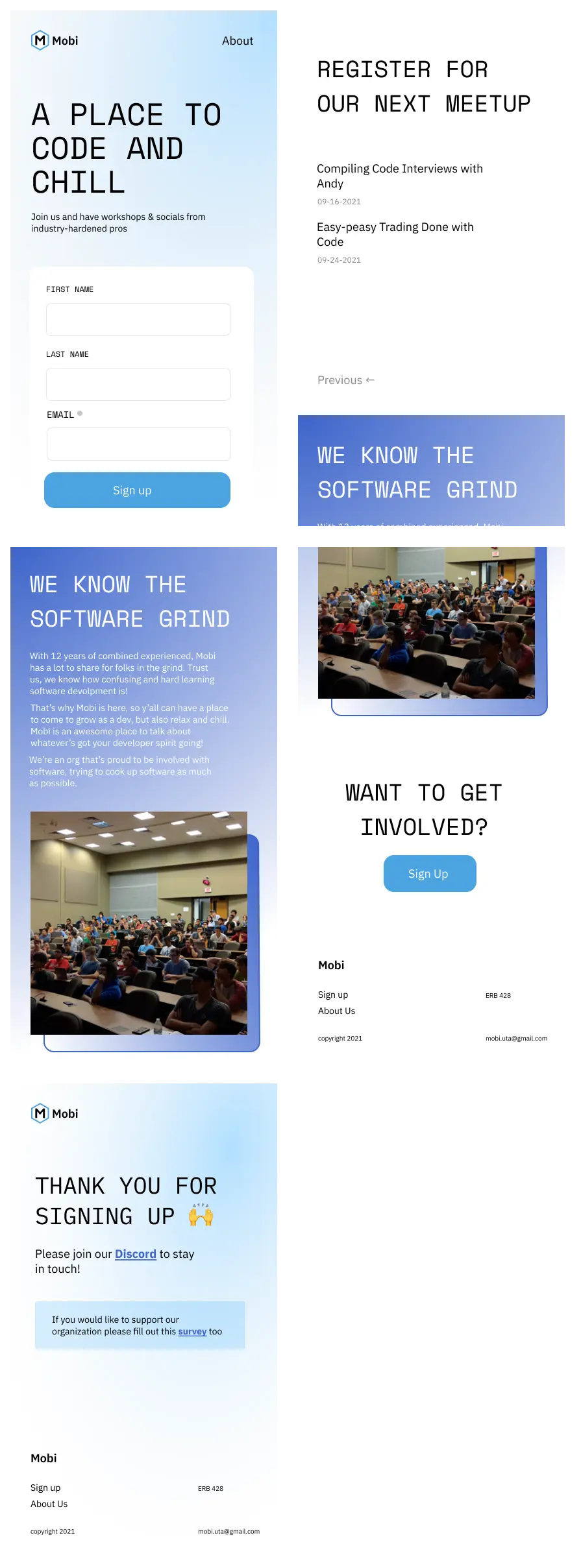
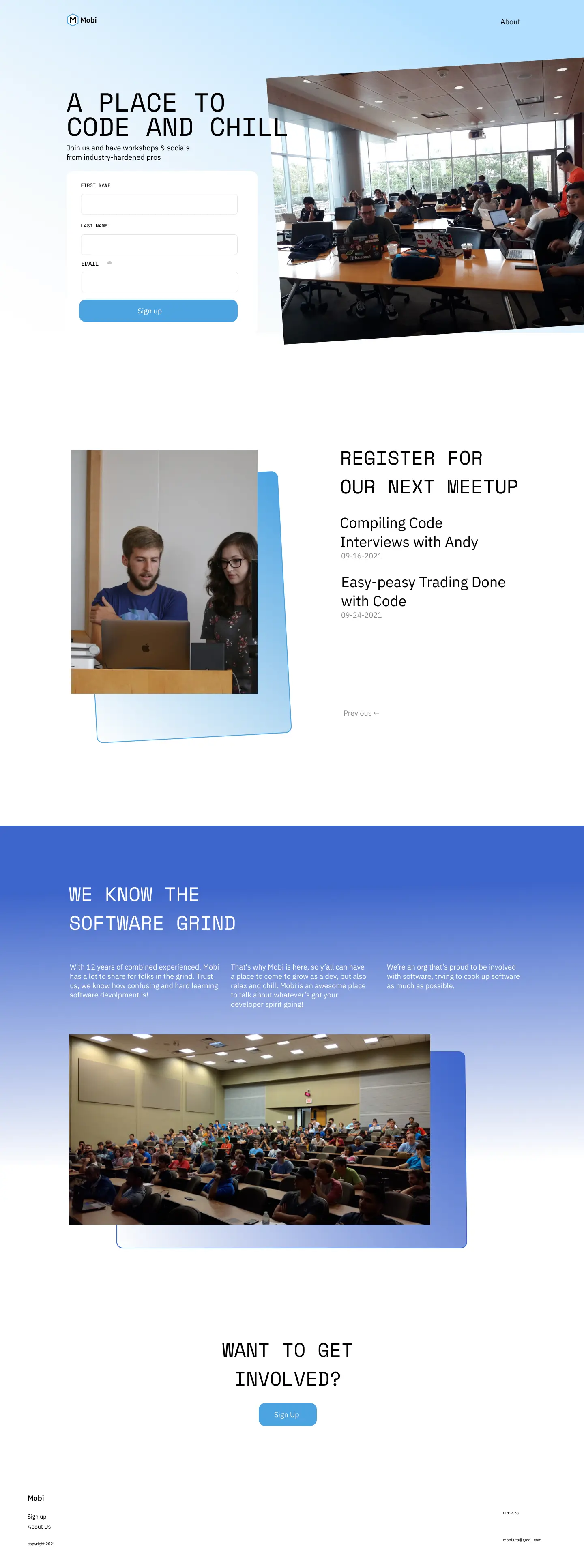
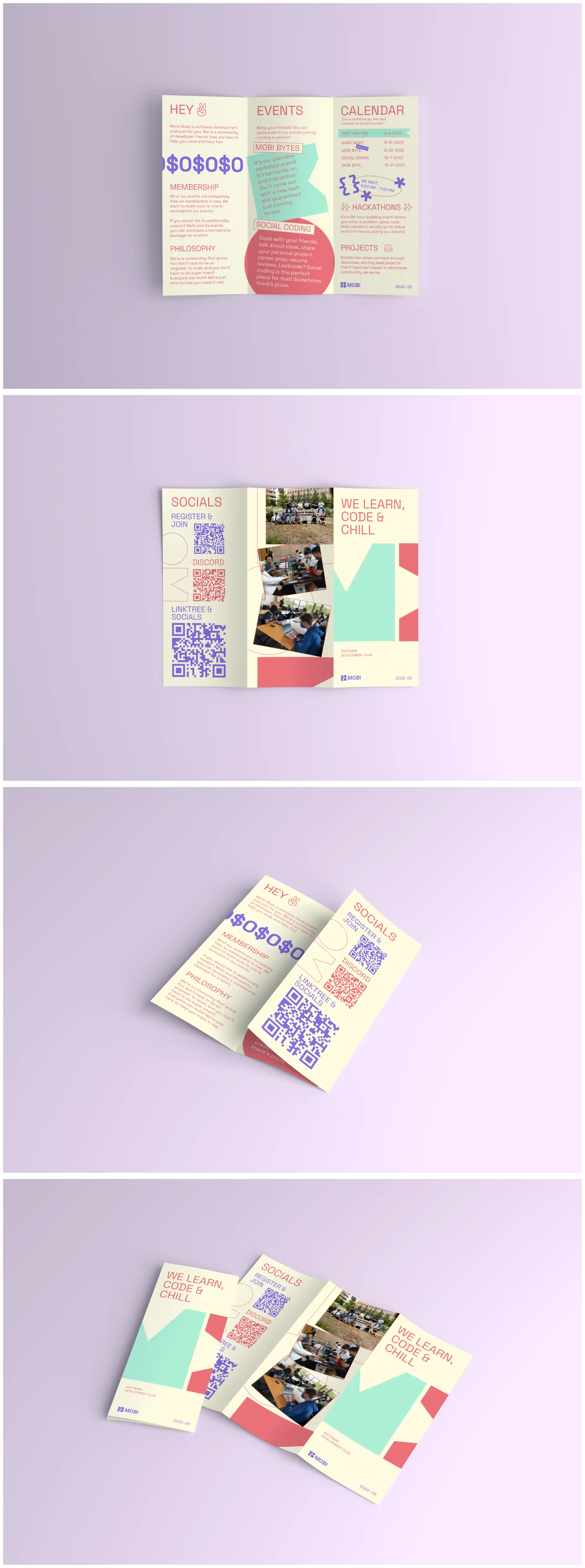
A series of colorful brochures I designed for MOBI recruitment events. I printed about 100 brochures and came home with 0.

A box and backside view of the MOBI T-shirts I designed. MOBI printed about 51 T-shirts and sold about 38.